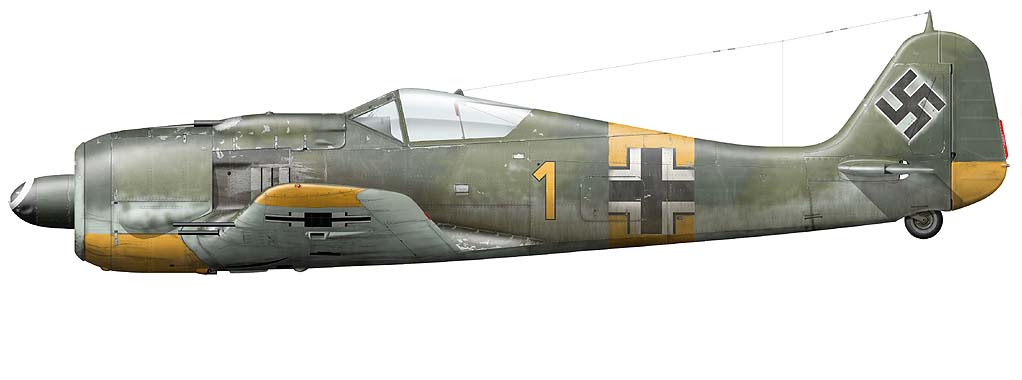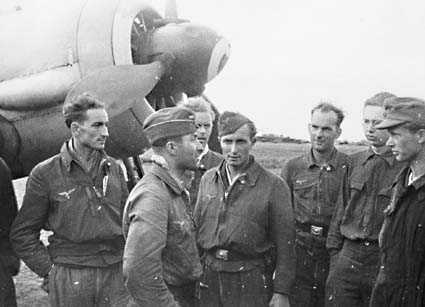


Otto Kittel was a quiet and
calm young pilot, and still developed into one of the top scoring
fighter aces of World War II. In the fall of 1941 the short-in-growth
24-year-old Unteroffizier Otto Kittel had just received his "wings"
and was posted to 2./JG 54 on the northern sector of the Eastern
Front. Intercepting large formations of Il-2s in the Leningrad
sector on February 19, 1943, JG 54 Grünherz claimed thirty
Soviet aircraft shot down. With one of the last kills on that
day, Feldwebel Kittel scored his thity-ninth and the 4,000th victory
of the Geschwader. The recognition that Kittel or "Bruno,"
as he was called received from this opened the gates to his outstanding
row of success in the next two years. Eight months later he reached
his 100-victory-mark. On October 29, 1943, Oberfeldwebel Kittel
was awarded with the Knight's Cross. Following his 150th victory
on April 8, 1944, he was promoted to Leutnant and put in charge
of the new 2./JG 54 on the Eastern Front. At 1206 hours on February
16, 1945 four Fw 190 A-8 led by Oberleutnant Otto Kittel of 2./JG
54 took off from an airbase in the Kurland pocket. The mission
was free hunting over the frontline area near Dzukste. After only
seven minutes the German fighters spotted fourteen Il-2s that
were bombing and shooting rockets at German troops from an altitude
of 450 feet. Oberleutnant Kittel radioed an attack order. The
Il-2 Shturmoviks were flying in a row, one after another, and
Kittel attacked from the right hand side. His wingman Oberfähnrich
Renner wrote:
"Flying at a distance of about 300 feet from Oblt. Kittel
I saw him dive beneath and behind an Il-2 and attack it. Behind
us two other Il-2s pulled up sharply. In the nexy moment an explosion
was seen in his cockpit and the aircraft started to descend."
Kittel's Fw 190 tore into the ground with its starboard wing,
caught fire, and then exploded. Otto Kittel, victor in 267 aerial
combats and the highest scoring fighter pilot to fall prey to
the enemy, had no chance whatsoever of surviving.
